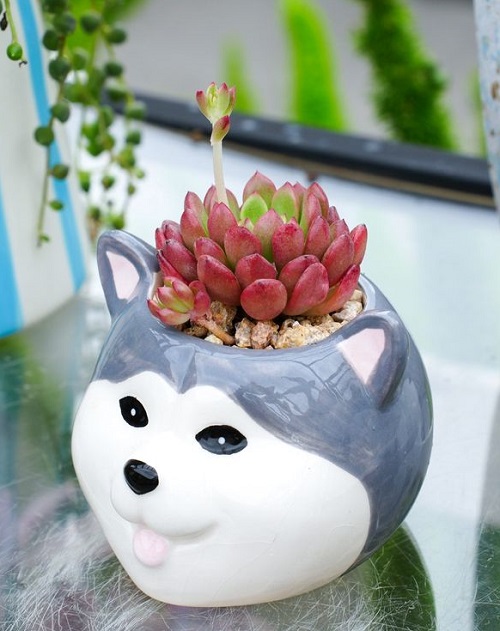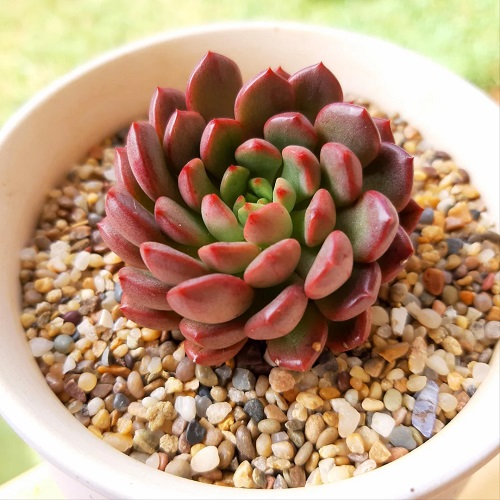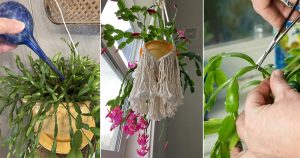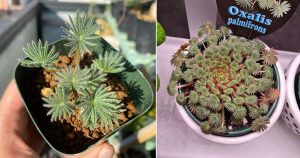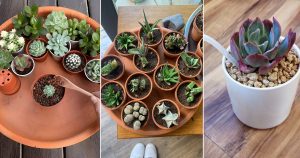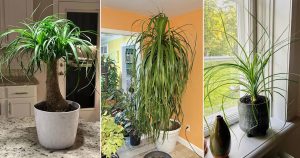Do you love bright and colorful succulents? If so, read along to grow and care for one such beauty, The Sedeveria Pink Ruby.
As pretty as its name, Sedeveria Pink Ruby is a succulent with unique features! Its beautiful color and appearance, which may confuse between the Echeverias and Sedums! And if you are wondering how they are similar to these two succulents, then a super interesting answer is waiting for you!
Sedeveria Pink Ruby – Key Facts
| Name | Sedeveria Pink Ruby |
| Common Names | Pink ruby, Pink granite |
| Origin | The U.S.A |
| Dimension | 3-4 inches tall and 6-7 inches wide |
| Indoor/ Outdoor | Both |
| Soil | Well-drained soil |
| Temperature | 60°F to 80°F |
| Watering | Twice in a week or less or when the upper layer of the soil dries |
| Sunlight | 5-6 hours of direct sunlight |
| Blooming Season | Early summer |
Sedeveria Pink Ruby Information
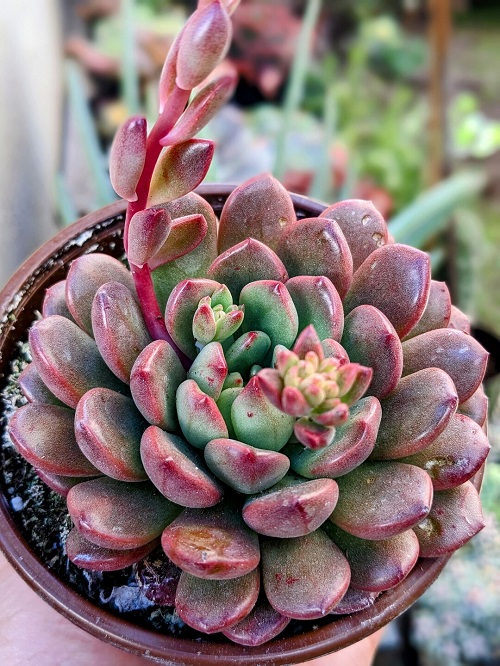
Sedeveria is a lovely ornamental succulent originating from the United States. As a matter of fact, it is a hybrid of two different succulents, Sedums and Echeverias. And which is why, it looks like both Sedums and Echeverias, and sometimes resembles both! These plants resemble succulents like Echeveria Red Noble Cluster, Echeveria “Red Devil” and Echeveria agavoides “Red Dragon”.
They have rosette-shaped, thick padded leaves and can grow in very dry and high-temperature conditions. The leaves of Sedeveria Ruby Pink resemble the petals of a lotus flower. It starts as purple with hints of green and then eventually changes color and turns bright pink when exposed to sunlight. And apparently, it’s their way of responding to stress and other external conditions.
Sedeveria Pink Ruby Pot Size
For versatile succulents like Sedeveria Pink Ruby, any range of pot sizes can be taken depending on the size of the plant. If the succulent is a baby plant then you can consider small-sized of about 2-3 inches, pots like the ones used as table tops and again you can use large-sized pots because the broader the space the bigger it spreads with its side shoots.
And if you want your succulent to look like a bouquet, then we suggest going for a medium to large-sized pot, such as 4-6 inches in diameter, so your succulent can have enough space to grow and look beautiful. However, make sure the pot has drainage holes!
Propagating Sedeveria Pink Ruby
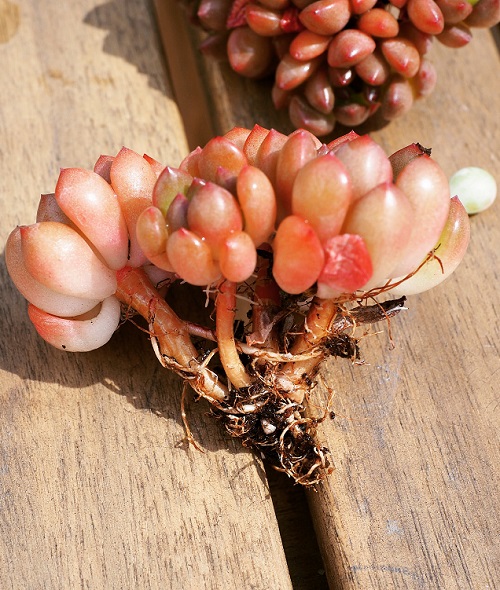
Leaves
The best and simplest way of propagating this succulent is with its leaves. You need to closely observe the plant and select the matured leaves which are generally seen below the top 2-3 layers of leaves. First and foremost, wear a pair of gardening gloves, prepare a wide bowl-shaped pot with loose soil, and spray water over it. Then gently twist the selected leaves of the succulent, and place them over the soil-mixed pot you just prepared. Leave them in a partially bright spot.
After a week, you will observe small calluses with tiny roots appearing in the petiole region of the leaf. You can leave these to grow more so that it can be easily transplanted later. Then, transfer them to separate pots with well-drainage loose soil mix and keep them under indirect sunlight.
Offsets
Like most other succulents, it also generates many baby shoots or offsets from the base of a matured plant and these shoots once a little bigger can be cut out from the mother plant and transplanted in a loose succulent soil mixture. They will develop roots within 1-2 months. Lastly, please make sure you sterilize the cutter and don’t forget your gardening gloves as well! And you are good to go!
Requirements for Growing Sedeveria Pink Ruby
Sunlight
If you want your Sedeveria Pink Ruby to look lush and bright, you should start by keeping your plant in a sunny spot, outdoors or indoors! Make sure it gets at least 5-6 hours of sunlight every day.
The more sunlight it gets the more dark and bright the color gets. Otherwise, your Sedeveria might turn green and the leaves will start to shrink.
Soil
The soil mixture for this succulent is simple and the same as for all kinds of succulents or cacti. It must contain perlite, sand, and coco peat in a ratio of 1:1:1 only. This mixture helps to drain out the excess water very easily to protect the plant from overwatering.
Watering
However, let us make it simple for you. Water them once a week during the day in winter and once or twice a week during the night or evening in summer.
Tip: Always check the top layer of the soil with your finger or use a stick to see if it’s completely dry before watering your succulent.
Temperature
This red beauty can tolerate temperatures up to 80°F and during the chilly winters, it is best to keep it in a spot where it can get enough sunlight. Otherwise, in extremely cold seasons, frost might affect the growth of this succulent. So, take extra care with your Sedeveria Pink Ruby during winter!
Sedeveria Pink Ruby Care
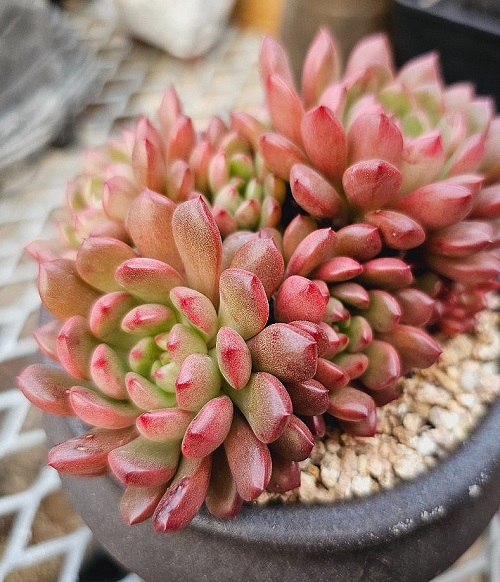
Fertilizer
Sedeveria Pink Ruby succulents do not need frequent fertilization of Phosphorus, Nitrogen, and so on. You can add organic nutrients like dried cow dung flakes, coconut coir, or chunks to the soil mixture while planting them and they can go on for a year with this.
There are some nutrient sprays available in the market, you can use them to spray on your succulents once a month.
Pruning
Sedeveria Pink Ruby succulents don’t require pruning until they become bushy due to the offsets that grow from the base of the plant. You can cut off these offsets if they appear too much and plant them separately. Additionally, you can also remove the dried and old leaves from the base when they appear.
Pest and Diseases
The Sedeveria Pink Ruby succulents are hardy plants and are rarely seen to get infected. Although, some common pests that can affect succulents include mealybugs, aphids, and spider mites. So, it is advised to regularly inspect your succulent for signs of pest infestation, such as webbing, sticky residue, or tiny insects.
You may treat any infestation promptly with appropriate pest control methods. Some pest control methods best suggested are the use of neem oil or powder spray, eucalyptus oil spray, or other available resources in the market.
Now that you know the tricks to grow these beauties, why not share your suggestions, tips, or experiences with growing them in the comments?

